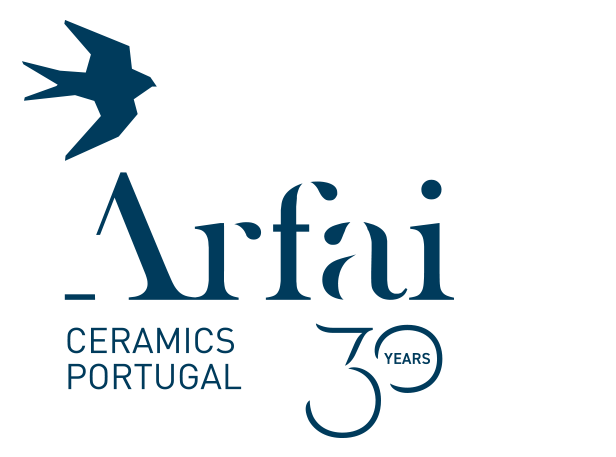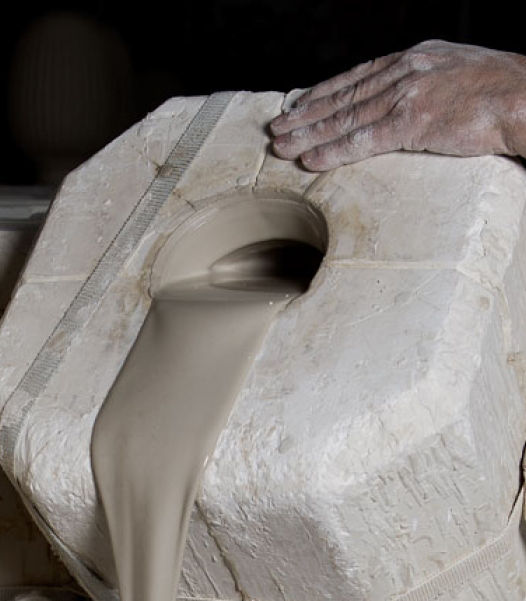
One of the oldest arts in the history of Humankind, ceramics is a quite proper material that presents unique characteristics and particularities. A material with personality, we could say, once no ceramist will deny that clay seems to have its own ways of resistance, which only know-how, experience (and loads of care) may overcome.
Showing how special ceramics can be, we have selected some curiosities of the production process you probably never heard about: some are pure science and others are simple techniques backed by experimental knowledge, obtained after many years working this beautiful process.
1. EACH PIECE IS FIRED FOR 2 TIMES (at least)
When raw, the earthenware is fired at a temperature above 1000 degrees. In this first firing, the piece loses humidity and so its plasticity, becoming white and hard. A second fire takes place after the piece is decorated (glazed and/or painted), this time at a lower temperature. Some finishes, as lusters or metallics imply a third firing, a process used to obtain more sophisticated decorations (find out more about glazes).
A fourth firing? Yes. It is possible. When a piece presents small imperfections that may be corrected in a retouch, this piece is fired once again to have a second chance.
2. AFTER FIRST FIRING CLAY BECOMES ‘BISCUIT’
No, it is not sweet, nor even crunchy. This is the technical designation given to the piece after it is fired for the first time. It gets white, hard, with rough texture but very porous and so quite weak. At this stage, the material presents the proper conditions to absorb the glaze.
3. VINEGAR IS USED TO MINIMIZE CASTING SPOTS
The very beginning of the process, the casting section, it is perhaps one of the most important stages in a ceramics piece’s life. This is where many imperfections and defects may be born, eliminated or minimized. A quite common imperfection is the so-called casting spots or silicate points – marks that will appear in the ceramics body only after glazing/firing. A visible silicate point in a vase’s front surface can deform a piece, despite all the efforts of the prior stages (finishing, sponging, painting and/or glazing). Fortunately, these initially invisible marks may be minimized during the sponging process, by simply adding vinegar to the water used to wet the sponge.
4. GLAZE IS LIQUID
Glaze can be defined as a coating layer, that is applied to the ceramics body through different manufacture techniques. This layer is fused to the ceramics body during fire and gains a vitreous and hard look, that seems made of glass. In fact, glazes are first a powder mixture that is applied in a liquid state.
5. A CERAMIC PIECE ALSO GROWS OLD
The passage of time has physical impacts, but not only in humans, also a ceramics piece may carry the marks of time. The so-called craquelé may be considered the wrinkles of a piece of ceramics. As the name suggests, craquelé are tiny crackles that are formed in the vitreous layer over time, normally assuming a net effect. An interesting effect that is actually intentionally recreated with some glazes that will provoke this effect in the piece.
6. EARTHENWARE IS NOT WATERPROOF
A real truth that is usually a surprise: “How come if you produce vases, for flowers that need water to survive longer?”. As a raw material, and as a low-fire clay, earthenware is not waterproof. Even after the first firing, as a porous clay, this type of ceramics presents imperceptible pores that will allow water absorption. Luckily, no piece is finished in a biscuit phase – during glazing, a vitreous layer will cover the surface, which may actually waterproof the piece and prevent the leak. But why may? Know more in ‘Are ceramics waterproof? What you need to know, once and for all’.

